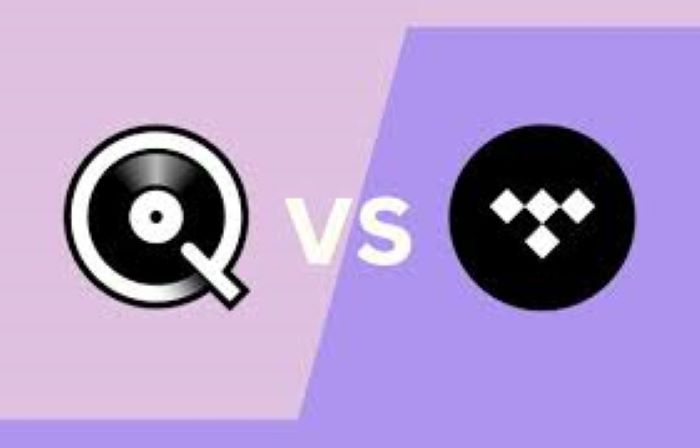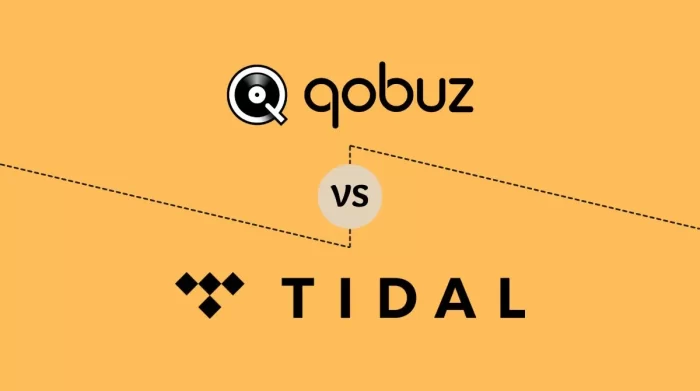With the rise of high-resolution audio and more consumers investing in high-fidelity audio equipment, streaming services offering lossless and hi-res music have gained popularity. Two of the major players in this arena are Qobuz and Tidal. Both offer extensive catalogs of music available to stream in CD-quality lossless formats as well as high-resolution formats for discerning listeners. In this article we talk about Qobuz vs. Tidal-Comparison for High-Resolution Audio Enthusiasts.
Table of Contents
Catalog Size & Depth

Both Qobuz and Tidal boast extensive music catalogs numbering in the millions of tracks. Qobuz claims around 70 million tracks while Tidal claims over 70 million. The depth of the catalogs is also impressive with both services offering both popular and more obscure music across genres. This includes not just contemporary music but also classic albums and rarities.
When it comes to hi-res, Qobuz offers the edge with around 2 million tracks available to stream in better than CD-quality hi-res formats up to 24-bit/192kHz resolution. Tidal offers around 1 million hi-res tracks up to the same resolution. Both services offer nicely curated editorial content like playlists and album spotlights that appeal to more discerning listeners.
Sound Quality
As high-fidelity streaming services, sound quality is a key area of comparison. Both Qobuz and Tidal offer CD-quality 16-bit/44.1kHz lossless audio which delivers better than MP3 quality. For hi-res, both services deliver up to 24-bit/192 kHz resolution on select albums which is as good as it gets for streaming currently.
The sound quality on both platforms is excellent, thanks to lossless FLAC streaming and carefully optimized audio parameters. Qobuz perhaps has a slight sonic edge for those with high-end audio gear who can discern the subtleties. But most listeners will find audio quality superb on both platforms even on modest equipment.
Device Support
To enjoy lossless and hi-res streaming, device support is critical. Here Tidal compares very favorably with apps available on most platforms including desktop, mobile, streaming media players, smart TVs, game consoles, AV receivers, etc. Qobuz has apps for desktop and mobile but lacks support on many streaming platforms which is a disadvantage.
Both services support external DACs using USB, Optical or HDMI ARC output for playing back lossless streams. But Tidal’s broader device support via apps makes it more versatile for enjoying hi-res music across devices.
Pricing
Pricing is an important criterion for any streaming service. Here both services are competitively priced for lossless streaming, but Qobuz has the edge on hi-res pricing.
Qobuz’s lossless CD-quality tier costs $12.99/mo which is very good. Their Studio Premier tier adds hi-res for $14.99/mo which is among the most affordable hi-res streaming options.
Tidal’s lossless CD-quality tier also costs a very competitive $9.99/mo. But their HiFi Plus tier required for hi-res costs a steeper $19.99/mo which feels pricier comparatively.
Both services offer lossless streaming at competitive pricing, but Qobuz clearly wins on value for hi-res streaming. Discounts for annual plans improve value further.
User Experience
Ease of use and the overall user experience is also very important for any streaming service. Here Tidal compares very favorably with its polished apps and visually rich interface. Browsing music, playlists, recommendations etc. feels intuitive and enjoyable. Integrations with other platforms like Sonos also bolster convenience.
Qobuz’s user experience feels more utilitarian. Navigation can feel unintuitive at times. The interface also doesn’t feel as slick or responsive especially on mobile. But it does the job allowing you to access and play your music. But Tidal wins hands-down on user experience.
Exclusive Content
A key selling point for Tidal has been exclusive content and artist partnerships. This includes “Tidal Masters” hi-res releases, concert livestreams, interviews etc from top artists. Fans of artists like Beyoncé or Jay-Z find such exclusives appealing.
Qobuz doesn’t have such exclusive content. But it focuses its editorial content on showcasing new album releases, artist spotlights, themed playlists etc tailored to more serious music listeners rather than casual fans. This content while not exclusive is still a nice bonus.
Verdict
So which high-res music streaming service comes out on top? For most discerning audiophiles, Qobuz wins for its cheaper hi-res streaming, bigger hi-res catalog, and laser focus on sound quality. But Tidal offers a more polished mainstream service with broader device support and exclusive content albeit at a higher monthly price. Ultimately both services deliver superb lossless sound quality so your music tastes and budget should drive the decision. Hopefully this detailed comparison helps you pick the right hi-fi streaming option for your needs. I sincerely hope you find this “Qobuz vs. Tidal-Comparison for High-Resolution Audio Enthusiasts” article helpful.

With a Master’s degree in Musicology and over 4+ years of experience in promoting musical talent, our author brings a blend of academic expertise and real-world insights to TalentNaija. Passionate about showcasing diverse musical genres, emerging artists, and industry trends, they provide practical tips and authentic experiences for music enthusiasts. Connect on Instagram @talentnaija_official and Facebook Talent Naija for the latest updates and inspiration.
Connect with Us:
Instagram: @talentnaija_official
Facebook: Talent Naija

